This was originally published on the NYC Municipal Archives Blog for the NYC Department of Records & Information Services.
https://www.archives.nyc/blog/2022/12/16/the-old-town-records-collection-a-frenchmans-possessions
Possessions are a funny thing in the modern world. We take our belongings for granted and know if we want something we can simply go to the store and pick it up or order it from Amazon. It’s even become a common expression that our possessions own us. In fact, we have so many things that a recent survey found more than thirty-eight percent of Americans reported paying for self-storage. Such abundance is a relatively new phenomenon.
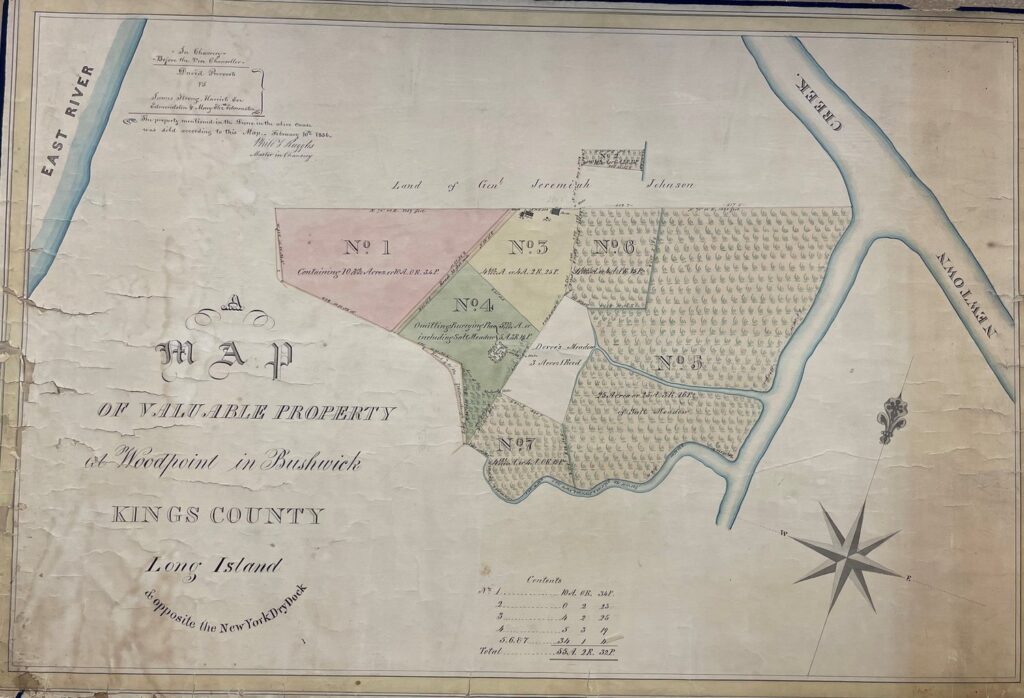
Records in the Municipal Archives sometimes offer a glimpse of what people owned in the past. An entry in the Town of Bushwick records gives us a rare glimpse into the belongings of a Brooklyn resident more than 350 years ago. The entry is titled “Inventory of the property which was found in the house of Jan Maljaart, a Frenchman, on April 29, 1664.”
With a grant from the National Historical Publications and Records Commission (NHPRC), the Municipal Archives has been processing the Old Town collection. It is comprised of records created in the villages and towns that were eventually consolidated into the Greater City of New York in 1898. They date to the 1600s and consist of deeds, minutes from town boards and meetings, court records, tax records, license books, enumerations of enslaved people, school-district records, city charters, and information on the building of sewers, streets and other infrastructure.
In a series of articles this year For the Record has demonstrated how these seemingly anodyne records reveal a great deal about daily life in centuries past. We know about their occupations, Oyster Boards in the Old Town Records (the Board of Health settled conflicting applications for oyster grounds in Flatlands on a “first come, first serve” basis);their schools, Schooling in Midwout Brooklyn in 1866 (the teacher shall be “…discreet, temperate and industrious and patient with the children and affable in their instruction); their libraries, New Utrecht a Library Catalogue circa 1796 (sixty-three books on the shelves on a wide variety of topics); their livestock, Brooklyn’s 370-year Heritage of Stray Goats (“The officer may seize and take possession of the goats which run without keepers, since they injure all the fruit trees and do other damage”); their amusements, Drag Racing, 1668 Style (“ … no resident or any one of our neighbors . . . shall attempt to drive at full speed with wagons or horses … upon the penalty for a fine of six guilders….”); and even their pets, Dog Licenses in the Old Town Records (The Department of Health requires owners to pay a fee and fill out a form that includes the dog’s name, breed, gender, color, and vaccination and spaying/neutering status).
This week’s article highlights the possessions of a colonial inhabitant. Little is known about Mr. Maljaart aside from the Bushwick Town record entry. It is specifically noted that he is a “Frenchman,” i.e. not Dutch, who were in control of the area at the time. It is possible that he may have been a French Protestant or Huguenot, who benefitted from the tolerance of Dutch rule under the West India Company.
Bushwick was one of the original Five Dutch Towns of Kings County and received a formal charter in 1660. Director General Peter Stuyvesant visited the village in 1661 and gave it the name Boswyck, which means the Town of Woods. It was renamed as Bushwick when the English assumed control over New Netherlands in 1664.
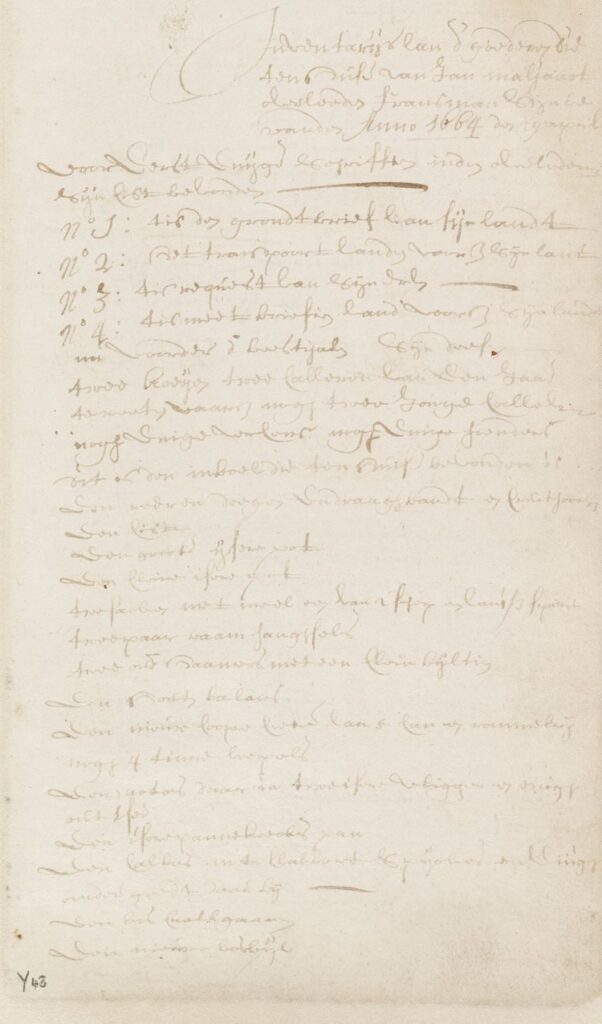
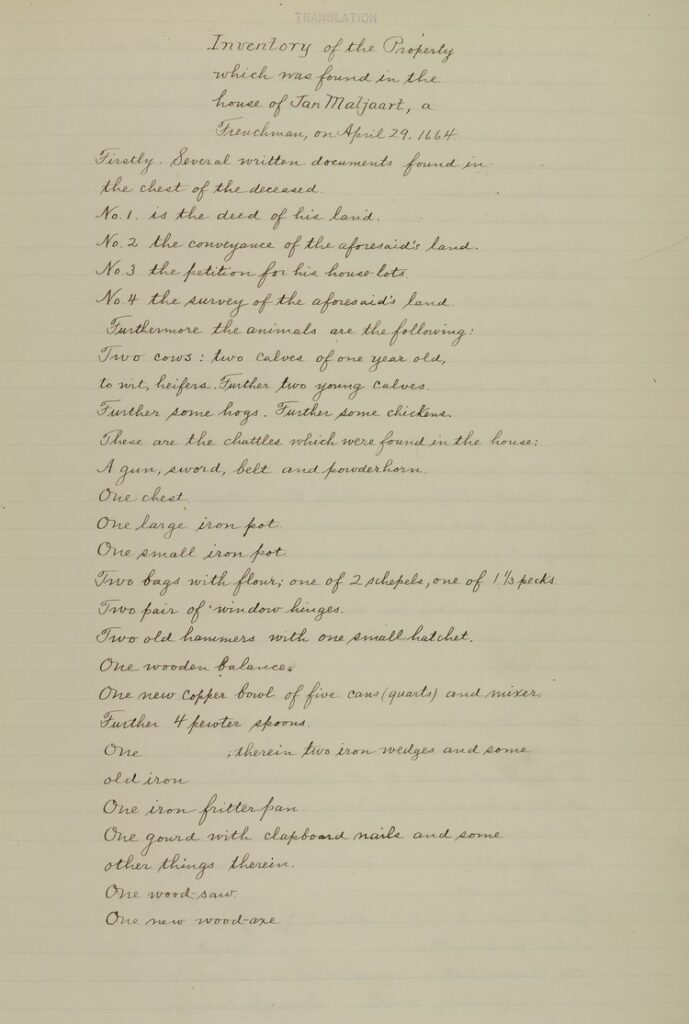
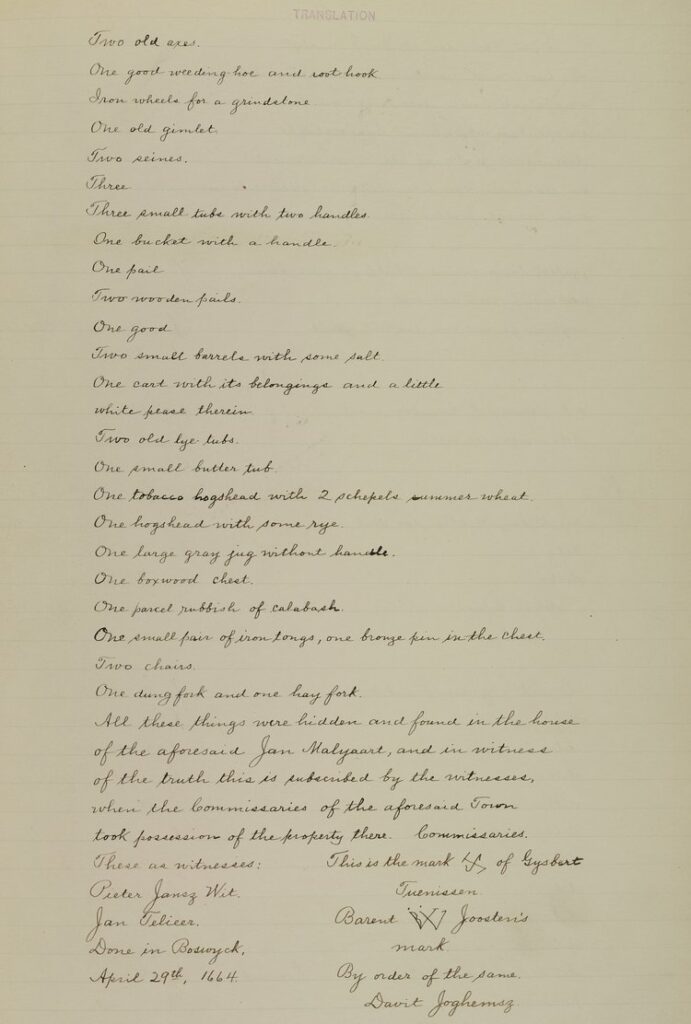
Examining the list of Mr. Maljaart’s possessions reveals a life defined by labor and likely little comfort. Given that his possessions were being auctioned, it is apparent he did not have family, or at least not at the time of his death. There is no mention of furniture–save for two chairs, so his rest time and bed must have been of his own making.
We do not know if he was literate—in French, Dutch, English or another language; there are no books listed with his possessions, but the first four items in the inventory are catalogued as:
“No. 1 is the deed of his land.
No. 2 the conveyance of the aforesaid’s land.
No. 3 the petition for his house-lots.
No. 4 the survey of the aforesaid’s land”
The majority of items on the list are tools that would be customary for any settler in at the time. Most are farming equipment: a pail, old lye tubs, a dung fork and a hay fork, small amounts of food supplies and iron cooking pots and pans, among other items. He also owned weapons—a gun, sword, belt and powderhorn.
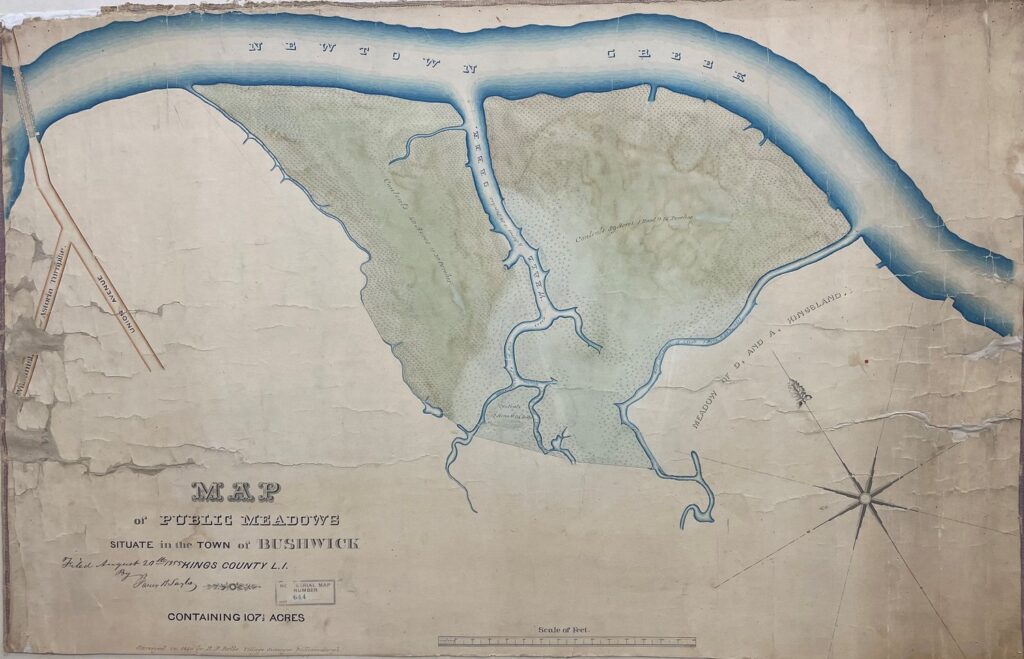
We can hope Mr. Maljaart was well-liked and well-remembered in 1664, and that his auctioned property was put to good use by other early Bushwick settlers. Today we have him to thank for insight into the life of a New Netherlands pioneer. This record and many others in the Old Town collection are filled with a variety of engrossing information. Look for publication of the complete finding guide to the Old Town Records collection soon, as well as future blogs that highlight the colorful content.